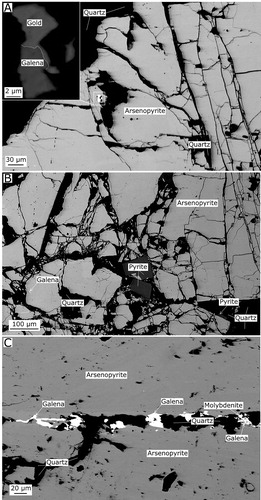Figures & data
Figure 1. Regional geological map of north Westland. The area of study, Arawau/Larry River, occurs in the northernmost portion of the Reefton Goldfield. Maps are adapted from Nathan et al. (Citation2002).
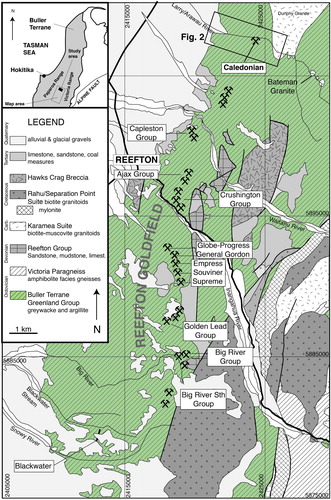
Figure 2. Geological map and cross-section of Larry River showing the assignment of different hornfels facies to the Greenland Group.
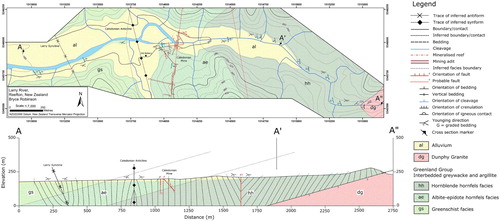
Figure 3. The contact between Greenland Group and the Dunphy Granite is exposed in the Arawau/Larry River gorge at E1515513 N5345537 (see ).

Figure 4. A, Greenschist facies rock with detrital grains in a metamorphic matrix from outside of the contact aureole. Sample CAL12B (field number). B, Albite-epidote hornfels facies rock from next to the Caledonian Mine contains biotite, muscovite, chlorite and quartz within the matrix. Metamorphic feldspar (albite) is present but not visible. Sample CAL7. C, Hornblende hornfels facies rock from near the Dunphy Granite displays an abundance of randomly oriented biotite grains. Sample CAL3. Locations of samples can be seen in and .
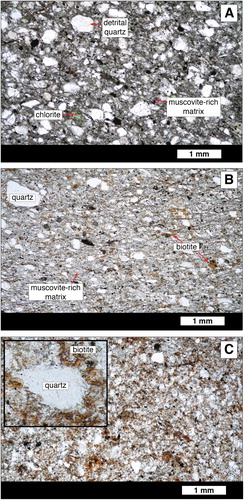
Figure 5. Map (A) and cross section (B) of through Caledonian Mine, adapted from Henderson (Citation1917). The historic underground workings are projected to the surface on the map. The mineralised zone dips steeply to the east but the workings are projected onto a plane in the cross section. Mineralised zones are indicated in red. The map underlay is from Google Earth. Grid references are for the Topo50 2000 Map series.
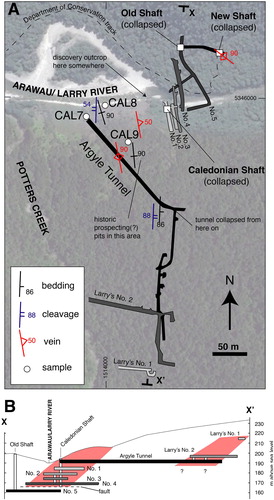
Figure 6. A, A hand specimen quartz vein containing clasts of hornfelsed Greenland Group from within the Argyle Tunnel. B and C, Close up details showing dis-equilibrium textures with the hornfelsed Greenland Group wall rock are highlighted. Sample is from location CAL8 (see ). D, Arsenopyrite grains are coarse, and grains with originally prismatic morphologies are brecciated. Sample is from location CAL8. E, Polished hand specimen showing pyrite and quartz occurring within brecciated Greenland Group (Grn. Grp.), which is also cut by numerous small quartz veins. Sample is from location CAL9. F, Close-up of the brecciated area in E.
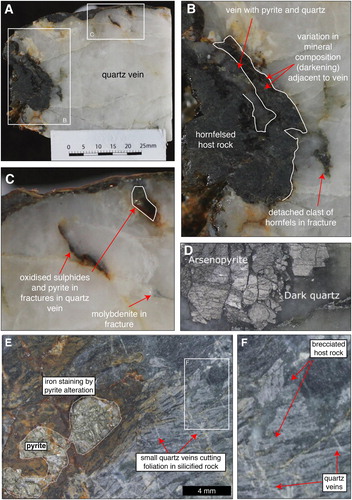
Figure 7. A, Polished hand specimen with a large area of arsenopyrite with minor, pyrite, apatite and gold occurs in a quartz vein collected from the Caledonian mine site. Sample CAL8E. B, Polished hand specimen showing the occurrence of gold, arsenopyrite, chalcopyrite and galena in a grey quartz vein. C, This BSE image shows the range of silicates, sulphides and elements that occur within hornfelsed material within a quartz vein. Sample CAL8E.

Figure 8. A, Backscattered electron image CAL8E contains arsenopyrite enclosing gold inter-grown with galena. B, This back scattered electron image shows the occurrence of galena and prismatic pyrite within a brecciated arsenopyrite. C, Galena, molybdenite and recrystallised quartz occur in fractures in an arsenopyrite grain. Note that quartz in these images appears black due to the low atomic weight compared to the sulphides and gold.
